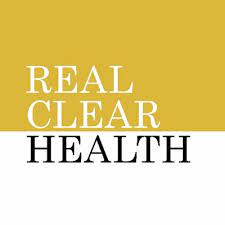Telehealth Helped During Covid – Are Politicians Going to Let Us Keep The Freedom?
Telehealth Helped During Covid – Are Politicians Going to Let Us Keep The Freedom?
Marcelo Hochman MD
As the world returns to pre-pandemic status, the innovations we’ve gained in the past two years
shouldn’t go with it. During the COVID-19 crisis, increased access to previously restricted telehealth was
one silver lining. Medicare patients were able to receive care safely in the comfort of their homes once
the Department of Health and Human Services and the Centers for Medicare and Medicaid Services
lifted long-standing bureaucratic obstacles.
Patients made good use of their new health freedom. An HHS report found that more than 28 million
Medicare beneficiaries used telehealth during the first year of the pandemic alone–using telemedicine
88 times more than the previous year. The average telehealth patient’s costs fell 61%, from $1,099 per
month to $425 per month in just one year.
Talking remotely to doctors was critical to providing care and saving lives during our lifetime’s worst
public health emergency. But by early next year, Congress’ failure to act may take that critical remote
care away for millions of patients.
Congress recently extended telehealth coverage for five months beyond the expiration of the federal
public health emergency–which is expected in mid-October. While the five-month extension is a step in
the right direction, Congress shouldn’t stop there. If Congress doesn’t act quickly to codify the
temporary telehealth access allowed during the pandemic, only rural patients receiving certain services
will be covered for telehealth.
By passing legislation like the Telehealth Modernization Act and the CONNECT for Health Care Act
Congress would keep the country from reverting to the past and allow patients from any geographic
location to receive a wide range of health services. By permanently removing many obstacles to
telemedicine, Congress would protect all Medicare beneficiaries’ access to their doctors–not just a
select few.
In determining the future of telehealth in Medicare, Congress should consider the success of telehealth
during the pandemic.
According to the HHS report, “Beneficiaries’ use of telehealth during the pandemic also demonstrates
the long-term potential of telehealth to increase access to health care for beneficiaries. Further, it shows
that beneficiaries particularly benefited from the ability to use telehealth for certain services, such as
behavioral health services.”
In addition to expanding remote access, telehealth services significantly reduce the no-show rate for
patients. One study found that the no-show rate of telehealth visits during the pandemic was only 7.5%,
compared to the in-office no-show rate of 36.1% during the pandemic and the pre-pandemic no-show
rate of 29.8%. Allowing all Medicare patients the flexibility and comfort of talking to their doctors from
any location incentivizes them to show up (remotely) and receive potentially life-saving care.
It also helps prevent the spread of infectious diseases–a person with the flu, a cold, or COVID-19 can
receive care in their house without going into the office and spreading germs. Allowing people with
milder ailments to be treated at home keeps beds open and nurses available for people with more
severe conditions.
Remote check-ins can save lives for those whose symptoms require more constant care. For example,
one study of pulse oximetry monitoring estimated that at-home monitoring had a 6 per 1,000 patient
mortality rate compared to a 26 per 1,000 mortality rate for those without home monitoring.
Researchers noted in the Journal of American Medical Association, “Based on a hypothetical cohort of
3,100 patients, the study projected that remote monitoring could potentially be associated with 87%
fewer hospitalizations, 77% fewer deaths, reduced per-patient costs of $11 472 over standard care, and
gains of 0.013 quality-adjusted life-years.”
Let’s face it. If these restrictions weren’t needed during a health emergency, they aren’t required when
it’s over. Through temporary telehealth authorizations, patients have had remote health care access for
two years now, and far from the sky falling, it’s saved lives, cut costs, and reduced the unnecessary
spread of germs. What could justify imposing restrictions again?
There’s a lot that won’t–and shouldn’t–be missed about the pandemic. But if Congress doesn’t act to
codify the telehealth flexibilities from the past two years, we’ll lose one of our best tools to ensure all
Medicare beneficiaries receive the health care they need.
Dr. Hochman is Double Board Certified, an extensive background of nearly 30 years in facial cosmetic
and reconstructive surgery, and immediate past president of Charleston County Medical Society
Share This With Your Colleagues, Choose Your Platform!
upcoming events
news via inbox
Stay up to date!











